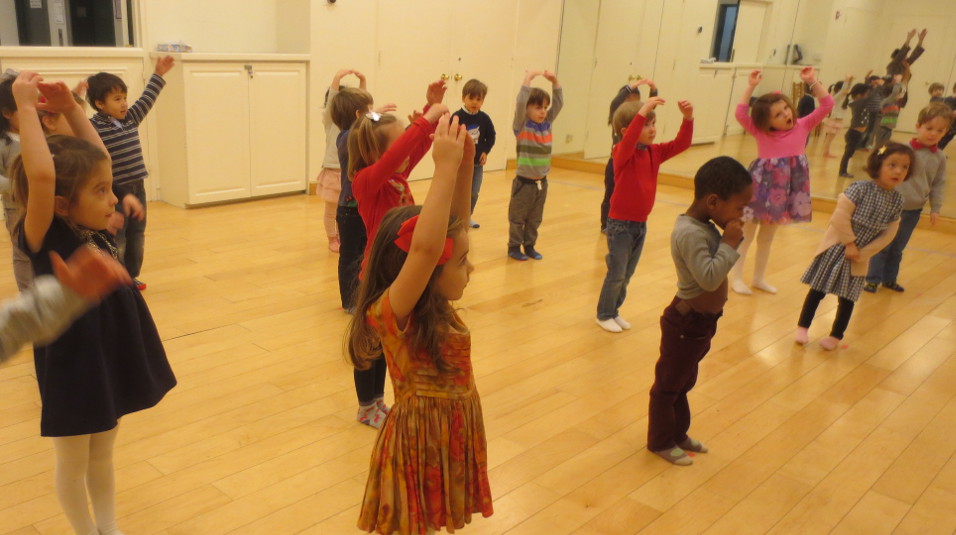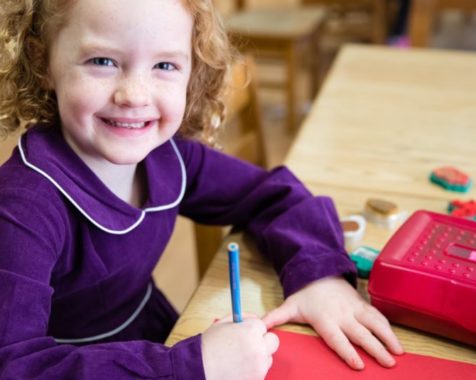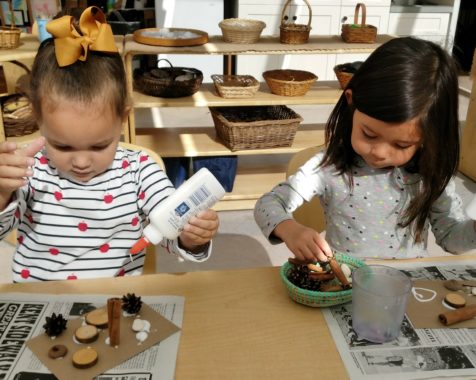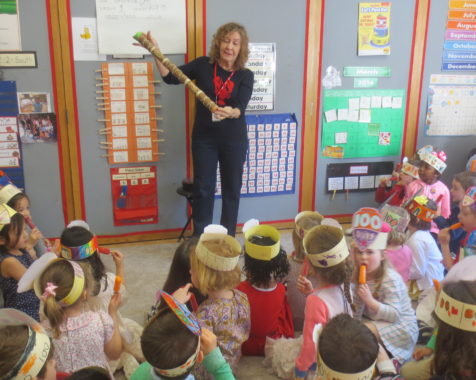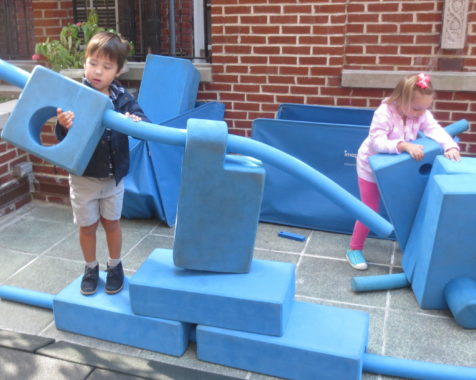Music is a very important part of early childhood education. At the Brick Church School, children go to music every week to sing, play, dance, listen, and explore.
The music program at The Brick Church School aims to give children the groundwork for a lifetime of joyful music making, relying upon foundational music skills and positive musical associations in their earliest years. The skills-based goals of the music and movement program at Brick are:
1) to enable the children to find their singing voice – called the head voice
2) to enable the children to match pitch; and
3) to enable the children to hear and produce a steady beat.
Singing is also a part of the daily classroom routine and the weekly Chapel services, where the songs learned are based on Judeo-Christian values of friendship and faith in God.
Through movement children explore their imaginations and physicality through many genres of music and through movement stories. They can pretend to be anything from ballerinas to gymnasts to martial artists to animals, or act out flying like an airplane, being the wind or rolling like a tumbleweed. By exploring and playing instruments children learn about the properties of sound, cause and effect and start developing artistry and basic music skills. Exploration of music by using their bodies and instruments promotes flexible thinking and activities are approached with an “anything can happen” attitude, so that children’s spontaneity and creativity is encouraged and developed.
Joy in making music is of primary importance, and the teacher strives to have children participate in all activities with confidence and enthusiasm.
